AP PHOTOS: At UN climate talks in Dubai, moments between the meetings
Almost every day at COP28, this year’s annual United Nations climate summit, an activist dons a costume of a dugong — a manatee-like creature that forages for seagrass in warm, shallow areas of the Indian and Pacific oceans.
The costume highlights the contrasts of climate talks marked by both spectacle and urgency, at a site that cost billions of dollars to erect, in what was once just an empty desert area of the oil-rich host country, the United Arab Emirates.
For nearly two weeks, Expo City has been the site of discussions about climate change and how to confront it. Between the meetings among thousands of delegates, there is a lot for them, and other attendees, to look at as they go from place to place.
A mural of women farmers, smiling as they work. Art installations, like a wall with hands holding cell phones. Post-it notes — pink, green, blue and yellow — with messages stuck to a wall.
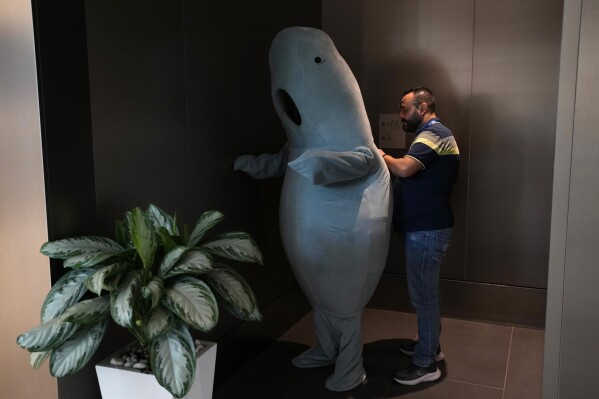
A person is helped in a dugong costume at the COP28 U.N. Climate Summit, Dec. 5, 2023, in Dubai, United Arab Emirates. (AP Photo/Rafiq Maqbool)
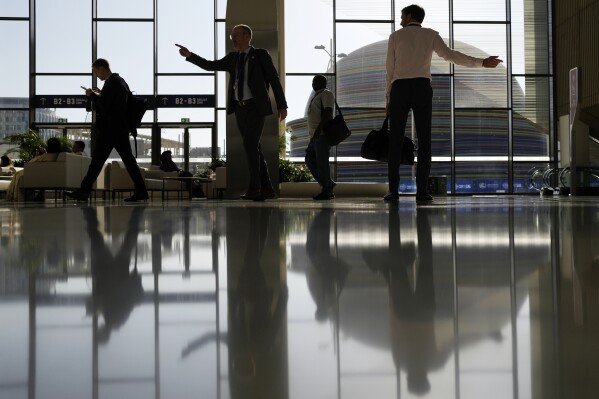
People walk through the venue at the COP28 U.N. Climate Summit, Dec. 1, 2023, in Dubai, United Arab Emirates. (AP Photo/Rafiq Maqbool)
Men in suits walk quickly through large halls while others, wearing white thobes, ride electric scooters outside. At nearly every turn, there is something colorful, or artistic, to stop and look at or simply gather a glimpse of while passing by.
At the center of the venue, in the Al-Wasl plaza, a massive dome lights up and projects sounds and colors in an immersive landscape. It’s a man-made structure that can mimic the real splendor of ocean bioluminescence or a sky scattered with stars.
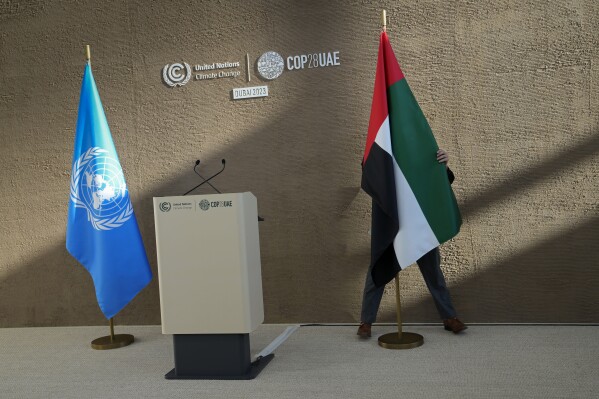
A person adjusts the flag of the United Arab Emirates ahead of a news conference by United Nations Climate Chief Simon Stiell at the COP28 U.N. Climate Summit, Dec. 11, 2023, in Dubai, United Arab Emirates. (AP Photo/Kamran Jebreili)
Conference attendees wander between a grand theater and two big plenaries and rows of meeting rooms, where world leaders, industry executives, activists, researchers and other stakeholders are holding panels and talks on everything from renewable energy to sustainable agriculture.
Beyond the confines of Expo City, climate change is happening, bringing urgency to the talks happening inside. So a central question is what this summit — with its futuristic aesthetics, its contradictions and its conversations amongst people from nearly 200 countries — will do about it.
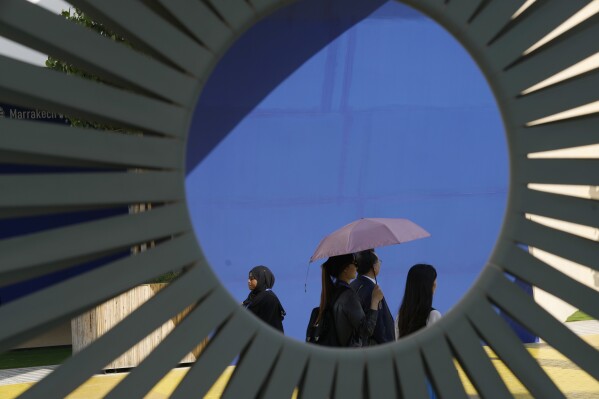
A woman walks with an umbrella to shield herself from the sun during the COP28 U.N. Climate Summit, Dec. 9, 2023, in Dubai, United Arab Emirates. (AP Photo/Peter Dejong)
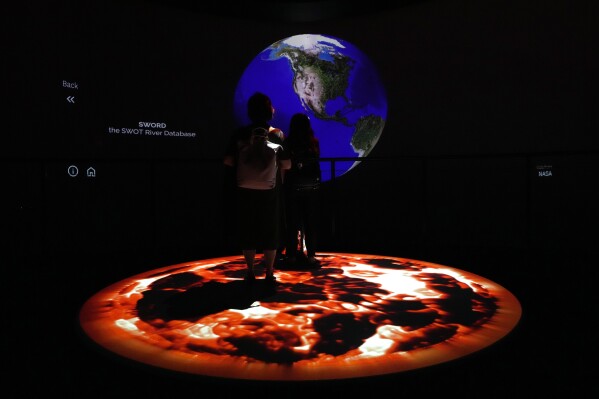
People look at artwork by Yiyun Kang at the COP28 U.N. Climate Summit, Dec. 3, 2023, in Dubai, United Arab Emirates. (AP Photo/Peter Dejong)
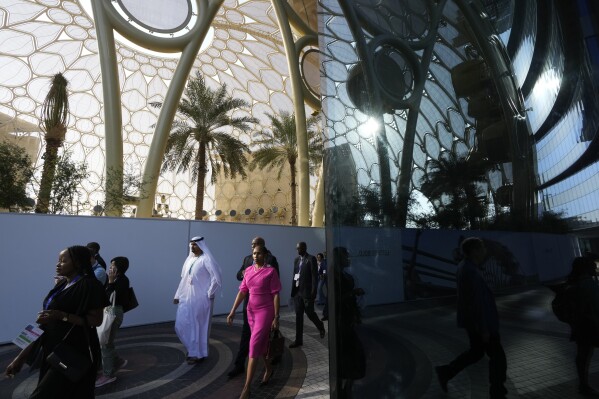
People walk through the COP28 U.N. Climate Summit near Al Wasl Dome at Expo City, Dec. 3, 2023, in Dubai, United Arab Emirates. (AP Photo/Peter Dejong)
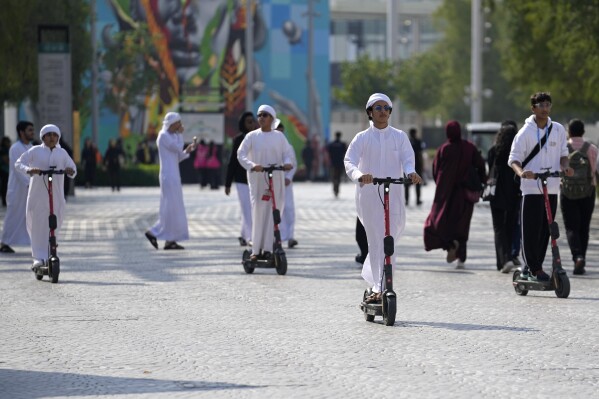
People ride an electric scooter through the COP28 U.N. Climate Summit, Dec. 8, 2023, in Dubai, United Arab Emirates. (AP Photo/Rafiq Maqbool)
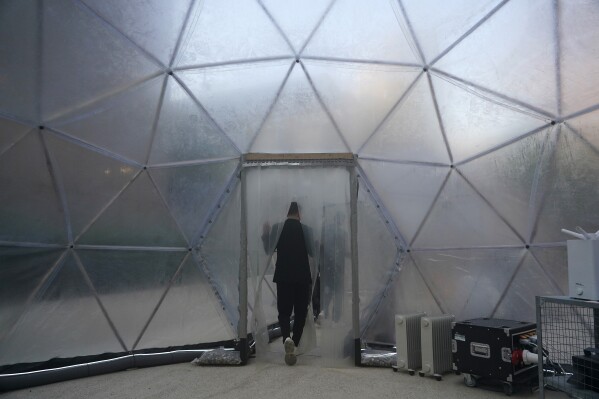
A person exits a pollution pod designed to mimic the air quality in New Delhi at the COP28 U.N. Climate Summit, Dec. 2, 2023, in Dubai, United Arab Emirates. (AP Photo/Joshua A. Bickel)
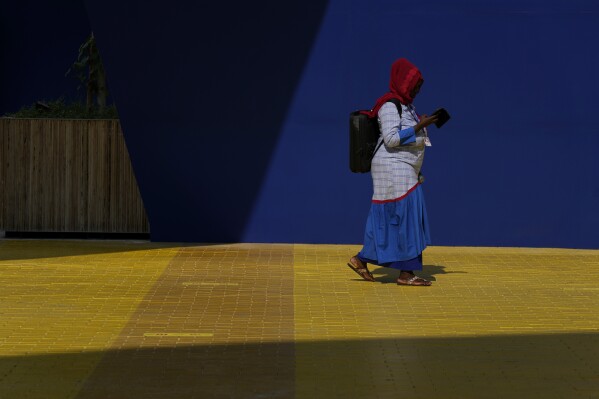
A woman walks through the COP28 U.N. Climate Summit, Dec. 5, 2023, in Dubai, United Arab Emirates. (AP Photo/Peter Dejong)
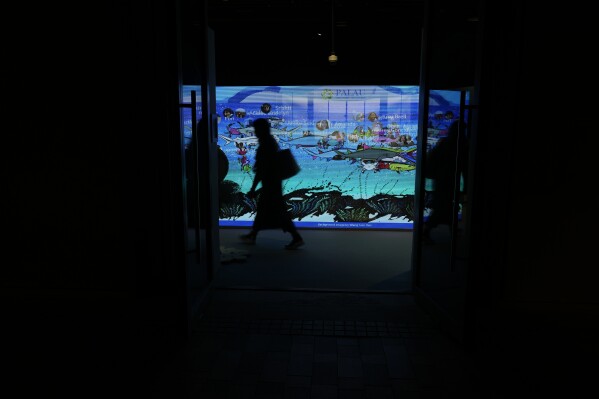
A person walks near a display for Palau at the COP28 U.N. Climate Summit, Dec. 10, 2023, in Dubai, United Arab Emirates. (AP Photo/Peter Dejong)

People look at artwork at the COP28 U.N. Climate Summit, Dec. 3, 2023, in Dubai, United Arab Emirates. (AP Photo/Peter Dejong)
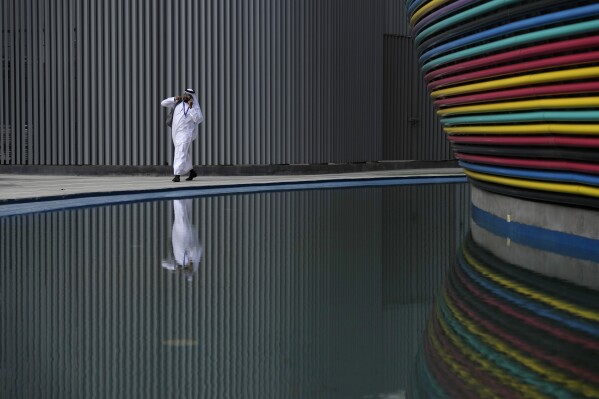
A man walks through the venue for the COP28 U.N. Climate Summit, Nov. 30, 2023, in Dubai, United Arab Emirates. (AP Photo/Peter Dejong)
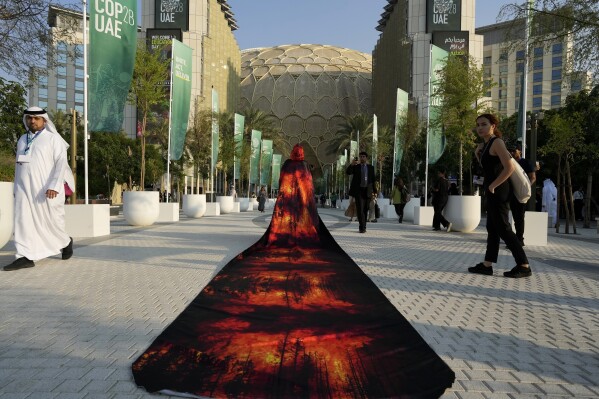
Islene Facanha, of Portugal, participates in a demonstration dressed with images of wildfires at the COP28 U.N. Climate Summit, Dec. 8, 2023, in Dubai, United Arab Emirates. (AP Photo/Peter Dejong)

Messages are stuck to a wall outside the Indonesia Pavilion at the COP28 U.N. Climate Summit, Dec. 10, 2023, in Dubai, United Arab Emirates. (AP Photo/Rafiq Maqbool)
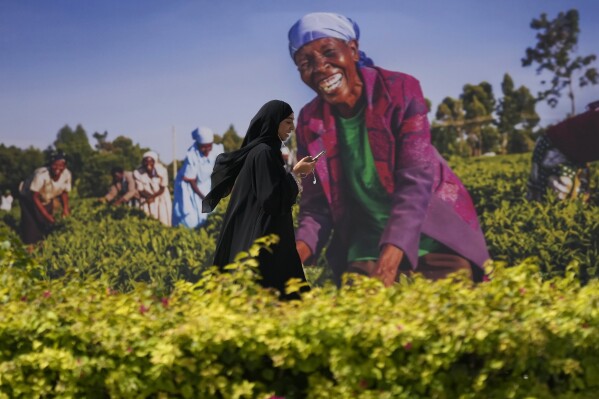
A woman passes a poster ahead of the COP28 U.N. Climate Summit, Nov. 28, 2023, in Dubai, United Arab Emirates. (AP Photo/Kamran Jebreili)
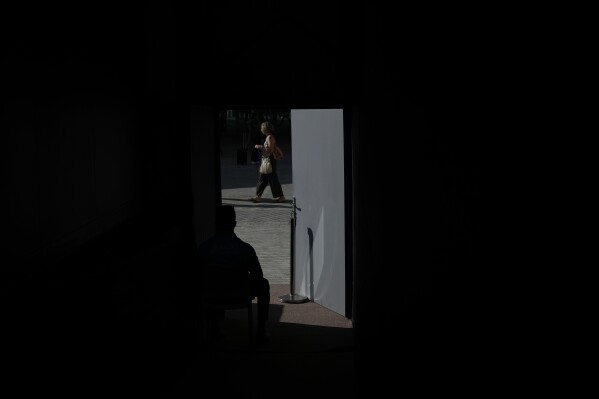
People arrive for the day at the COP28 U.N. Climate Summit, Dec. 5, 2023, in Dubai, United Arab Emirates. (AP Photo/Rafiq Maqbool)
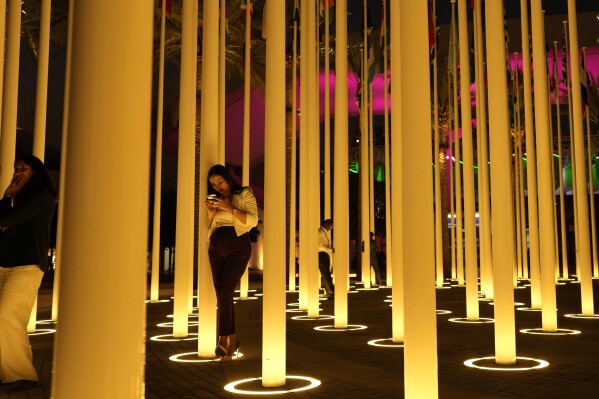
A woman looks at her phone surrounded by flagpoles during the COP28 U.N. Climate Summit, Dec. 8, 2023, in Dubai, United Arab Emirates. (AP Photo/Rafiq Maqbool)
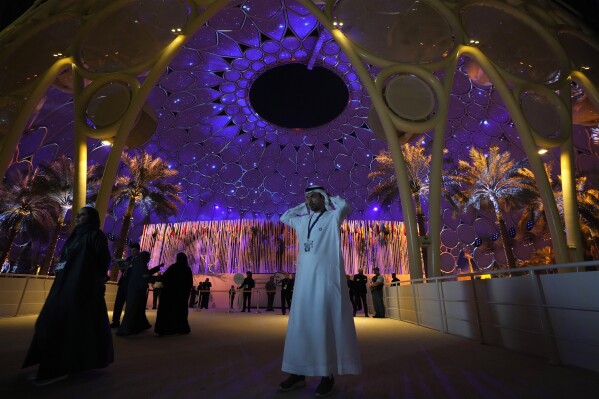
People walk near a lit up Al Wasl Dome at Expo City at the COP28 U.N. Climate Summit, Dec. 1, 2023, in Dubai, United Arab Emirates. (AP Photo/Peter Dejong)
___
Associated Press climate and environmental coverage receives support from several private foundations. See more about AP’s climate initiative here. The AP is solely responsible for all content.
Disclaimer: The copyright of this article belongs to the original author. Reposting this article is solely for the purpose of information dissemination and does not constitute any investment advice. If there is any infringement, please contact us immediately. We will make corrections or deletions as necessary. Thank you.


